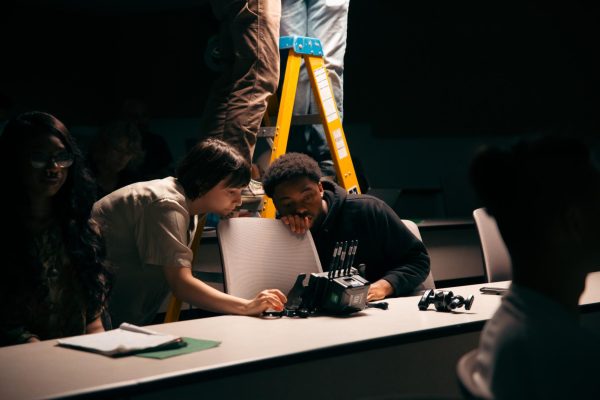Computer science jobs attract more students
October 5, 2009
Obama’s cabinet pushes STEM fields
Kent State observed a 35 percent increase in the number of students declaring a computer science major this fall in comparison with the same period last year. The computer science LER course, Introduction to Computer Science, had an increase of 21 percent in comparison with Fall 2008.
“This is a good time to be here,” said Robert Walker, chair of the department of computer science. “There is a reason why people are coming to the field now.”
Walker said some of the factors that contributed to the increase in enrollment are that other jobs were created after lower-level jobs moved to India and China. There are more jobs in computing now than at the height of the dot-com boom, and the Obama administration has put emphasis on science, technology, engineering and mathematics — or STEM, he said.
Occupations in the computer science field include computer and information system managers, computer programmers, computer scientists and database administrators, computer software engineers, computer support specialists and system administrators and computer system analysts.
The computer science field keeps growing. According to the 2000-2010 employment projection released by U.S. Bureau of Labor Statistics, computer and data processing services is the industry with the fastest-growing occupations. In a list of the occupations with the largest job growth between 2000 and 2010, eight are computer science-related jobs.
The first seven occupations are computer software engineers and applications, computer support specialists, computer software engineers, network and computer system administrators, network systems and data communications analysts, desktop publishers, and database administrators. Computer systems analysts occupy the ninth place in the list, between personal and home care aides and medical assistants.
“In a world that is constantly being improved by technology and therefore becoming more and more dependent on technology, I can’t see technology going away anytime soon,” said Kevin Basista, sophomore computer science major, in an e-mail interview.
Nestle, NASA, First Energy and Cleveland Clinic are among the different companies a computer science major can work for, Walker said.
“Some jobs moved, but there are actually more jobs now than in 2001,” Walker said.
According to the Ohio Department of Job and Family Services, computer software engineering and applications are among Ohio’s fastest growing occupations between 2006 and 2016. The projected employment growth rate in the area is 38.9 percent and there is an average of 880 annual openings in the area. The average wage, $37.29, is behind personal financial advisers, veterinarians and physician assistants only.
“People need this stuff now; otherwise, how can we get by?” Walker said.
Introduction to Computer Science, the computer science LER course, is also a requirement for other majors.
Jenny Cappuzzello, freshman middle childhood education major, is taking the introductory course this semester as a requirement.
“The more you know, the more power you have – that’s where education is going,” Cappuzzello said, referring to the use of computer and technology in the classrooms.
Kent State made a series of changes to make computer science courses more accessible and to attract students interested in the field, said Gwenn Volkert, associate professor of computer science.
“We are trying to let people see that computer science is more important than it has ever been,” Volkert said.
Advertising the introductory course among students, updating course material and changing the course description to a language attainable to all students were some of the measures taken prior to the beginning of the semester, Volkert said.
“This course needs to be a broad base because everybody needs it,” Volkert said.
Some of Volkert’s students have been using what they have learned in their computer sciences introductory course in other classes.
One of the resources Volkert uses in class is “Scratch,” an online programming language that lets anyone create his or her own games, stories or animations that can be shared on the Internet with anybody, and many of her students have their games posted online, she said.
“Being technologically competent has to be worth something in such a technology dependent world,” Basista said.
“People want to know it now,” Volkert said. “We hope the trend continues.”
Contact College of Arts and Sciences reporter Mariana Silva at [email protected].























